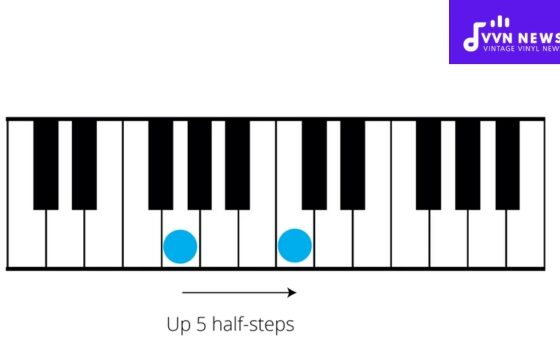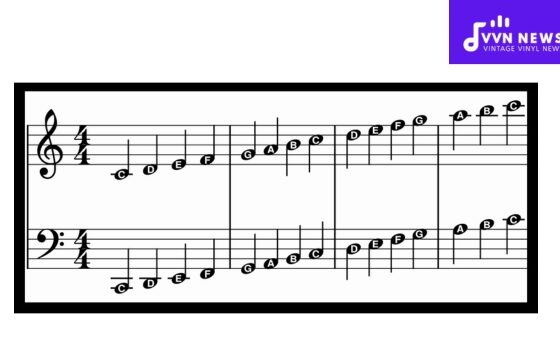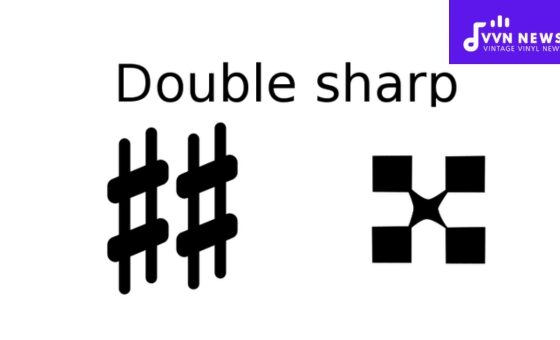Every symphony you’ve ever swayed to, each rock anthem that has made you pump your fist in unison with the crowd, and every soothing lullaby that has calmed a crying baby, all have one thing in common; harmony in music.
It’s an integral ingredient that blends different notes into a beautiful narrative for our ears.
This balance, this unity of sound, is what weaves magic into the fabric of every tune and melody.
Harmony in music is like the spices simmering in a delicious stew. Just as you can’t quite identify individual spice yet recognize its presence collectively creating an exquisite flavor, likewise with harmonious tunes.
The individual notes may be less discernible but their cumulative effect paints a rich auditory landscape that resonates with our emotions.
What is Harmony in Music?
Harmony is the vertical aspect of music, representing how sounds blend when played simultaneously.
It’s an intentional stacking of different pitches and frequencies that result in chords.
Much like a supporting character enhancing the storyline, harmony serves to enrich and deepen the primary melody.
An exceptional culinary metaphor would be beginning to interpret harmony as the seasoning enhancing the base ingredients, adding zest and depth to the overall composition.
It transforms simplicity into complexity, breathing life into a piece of music with its alluring blend of sound.
Unseen but unforgettable, harmony creates the mood, direction, and color in music.
How Did Harmony Develop Historically?
Every era has influenced and refined the notion of harmony in its own way, laying stepping stones for future musical endeavors.

The origin of harmony dates back to Ancient Greece, where Pythagoras’s musical theories guided its infancy, focusing on concordant pitches and consonant intervals.
In the Medieval period, Organum—a style implying several voices—emerged, creating an early form of harmony through parallel moving lines.
The Renaissance era became a playground for experimental harmonies with composers embracing triadic chords and more complex polyphony.
The Baroque period thoroughly explored chromaticism creating intricate harmonic tension and release patterns. Bach’s intricate fugues serve as a perfect example of this.
Progressing into the Classical era, composers like Mozart favored clear tonality and developed more delicate harmonies to emphasize melody.
Into the 20th century, harmony was significantly expanded to include atonality, serialism, and even microtonal music courtesy of innovators like Schoenberg and Stravinsky.
Today’s harmony encompasses every historical imprint layered with contemporary tweaks, promising endless possibilities for future generations.
Building Blocks of Harmony
When you dig down to the heart of harmony, it becomes apparent that there are several key components at its core.
Chords
Firstly, there are chords. A chord is a group of three or more notes that play simultaneously.
At its most basic, a chord might consist of just two notes (a major or minor third), but more complex chords can contain four, five, six, or even more different pitches.
Triads
Delving deeper, you encounter triads. A triad is a specific type of chord consisting of three notes.
The most common triads –major and minor– are composed of the root (1st), third (3rd), and fifth (5th) notes of a scale. They form the foundation for most Western music.
Intervals
Then there’s the matter of intervals — the distance between any two notes in a chord. This silent gap plays a significant role as it creates tonal relationships within a piece.
Harmonic Progression
Last but certainly not least are harmonic progressions. These sequences provide structure and shape to a musical composition by creating movement from one chord to another.
These fundamental building blocks meld together to form intricate harmonic patterns that captivate listeners and greatly contribute to the allure and power of music.
Also Read: A Sharp Minor Pentatonic Scale [Unique Harmonic Possibilities]
The Importance of Key or Scale in Harmony

The key or scale plays an instrumental role in shaping the harmony of a piece of music.
It sets the tonal foundation from which harmonies are constructed and melodies inspired.
Defining Key & Scale
In simplest terms, a key in music refers to a group of pitches, or scale, that forms the basis of a composition.
The scales are categorized into two main types: major and minor scales. They possess unique characteristic tones that can evoke different emotional responses.
Harmony Through the Looking Glass of Scales
Harmony inherently depends on the relationship between different tones. This relation is fundamentally guided by scales.
Creating harmonious chords often involves pairing notes from within the same scale.
This generates consonance—a pleasant resolution—or dissonance—an unresolved tension—depending on the combinations used.
A musical piece defined in C Major will inherently have a different harmonic fabric than one written in D Minor, even if they share identical chord progressions.
key’s tonal characteristics seep into the harmony, infusing distinctive flavors into each chord and melody line.
Impact on Song Composition
The choice of key doesn’t just dictate tonal quality; it also impacts practical aspects like vocal range and instrument tuning.
Composing harmonies around these choices leads to an arrangement where all elements work together, akin to pieces of a puzzle fitting beautifully together, enhancing the overall musical experience.
This key-scaled accord is akin to knowing your colors before painting—it liberally catapults creative possibilities while guiding you with specific foundational principles.
What are the Primary and Secondary Triads?
In the realm of music, triads are fundamental. They are composed of three notes played simultaneously and primarily form the landscape for harmony.
Specifically in Western music, two types of triads carry a crucial role – primary and secondary.
Primary triads, also known as tonic, dominant, and subdominant triads, essentially correspond to the first (I), fourth (IV), and fifth (V) scale degrees.
These particular triads offer a sense of grounding and define the key signature of any piece.
On another hand, secondary triads refer to chords that do not naturally occur within a given key but are borrowed from other related keys.
These include ii (supertonic), iii (mediant), vi (submediant), and vii° (leading tone) in major keys; likewise in minor keys they are iv (subdominant), VI (submediant) and VII (leading tone).
The artful interplay between primary and secondary triads constructs a dynamic harmonic structure that conveys tension, release, fluidity, or stability throughout any piece.
Also Read: How Does MP3 Compression Work? [Lossy vs Lossless Compression]
How Does Modulation Influence Harmony?

Modulation, in essence, is the shifting from one tonal center or key to another within a piece of music.
It’s akin to a subtle change in conversation, steering the topic seamlessly without disruption.
Influencing Tone & Mood
Modulation acts as a highly effective tool to impact the tone and mood of a composition.
It can introduce a sense of surprise, casting an unexpected light on the music’s narrative.
A carefully planned modulation can cause euphoria during an intense symphonic movement or express sorrow in a melancholic ballad.
Expanding Musical Landscape
By diversifying the harmonic environment, modulation broadens the musical landscape.
A piece that may start in C major could travel through G major, E minor, or any other related or unrelated keys, creating an astounding tapestry of harmonies.
Keeping Listener Engagement
A good analogy for modulation is taking alternative paths during a journey instead of sticking to one straight road.
Modulation helps maintain listeners’ interest as it introduces new sonic perspectives along the way.
Modulation and harmony are intertwined – one influencing and enhancing the other to create engaging sonic stories.
What is the Impact of Harmonic Speed and Rhythm?
Harmony is not solely defined by the notes that musicians play. The length of time each chord is held, known as harmonic rhythm, dramatically influences how listeners perceive music.
Harmonic Speed
Harmonic speed refers to the tempo or pace at which chords change within a piece.
In some highly energetic songs, you might notice chords change quickly while in slower ballads, chords linger longer.
This shift affects the mood and emotion carried by the music; fast changes generate excitement while slow evolutions provide a restful feel.
Rhythm Influences
Rhythm profoundly impacts how harmony is experienced. A rhythmically interesting piece can bring even the simplest chord progression to life.
It can create tension, release, anticipation, and surprise, effectively transforming listeners’ feelings and responses.
Effects on Listeners
Listen to a lively jazz trio or a mellifluous classical symphony and you’ll appreciate how fluid variations in harmony manipulate mood transitions – from calm to animated, from tense to relaxed.
Thus, harmonic speed and rhythm are not mere technical aspects of music but deft storytellers expressing subtle shifts in emotional narratives.
Harmonic speed and rhythm are pivotal to shaping one’s experience with music – showcasing once again that harmony is more than just combining the right notes; it’s about presenting them at the right time.
Also Read: How Long Does It Take To Develop Calloused Guitar Fingers?
What are the Different Types of Harmony?

Harmony adds depth to music and comes in diverse forms. To fully appreciate its role in creating a rich tapestry of sound, let’s dive deep into some commonly used types.
Diatonic Harmony
Diatonic Harmony is the backbone of Western music. It involves chords made from notes within a particular key or scale.
Remarkably expressive yet simple, this harmonic structure dominates genres from classical to pop.
Chromatic Harmony
A deviation from diatonic rules, Chromatic Harmony employs notes outside the central key or scale.
This harmony enriches any composition by adding unexpected twists that draw listeners in further.
Jazz Harmony
Rich and complex, Jazz Harmony is characterized by its distinct use of extended chords and dissonant tones which breathe life into jazz’s exceptional sound.
Harmonic Rhythm
Nestled within each tune is an unspoken beat, a pulse that propels the melody forward.
Harmonic Rhythm refers to changes in harmony as they align with this pulse.
Each type offers unique possibilities to composers. Their careful selection and implementation can enrich musical pieces, ensnaring listener’s ears and hearts alike.
Knowing them empowers you to experiment or even merge modalities for limitless mixtures of auditory experiences.
Also Read: Acoustic Treatment: Where Does The Absorbed Sound Go?
FAQs About The Harmony
What is harmonization in music?
Harmonization refers to the creation of musical harmony or the method of adding chords to accompany a melody.
Can there be music without harmony?
Yes, it’s possible. However, such a piece would lack the depth and richness that multiple interplaying notes or instruments provide.
How can one identify harmony in a song?
Listen for the accompanying notes that support the main melody. These background or supporting sounds constitute the song’s harmony.
Is harmony in music important for every genre?
Though its use might differ among genres, almost all musical styles incorporate some form of harmonic arrangement.
Are there different types of harmonies in music?
Harmony can be simple as in ‘tonal’ music, complex as seen in jazz arrangements, or even deliberately discordant like in some modern compositions.
Conclusion
When we listen to music, harmony is the invisible thread that ties all the various elements together.
It is a source of great depth and richness in musical compositions, affecting our response to the music at an almost subconscious level.
From melodies to rhythms, from keys to scales, and beyond, harmony influences it all.
By mastering harmony and its foundational concepts like triads and modulations, we can not only appreciate music more profoundly but also create captivating compositions ourselves.
Harmony transcends boundaries and cultures; it consists of a universal language that we all instinctively respond to, making it a powerful tool for communication and evoking emotions across all people worldwide.








